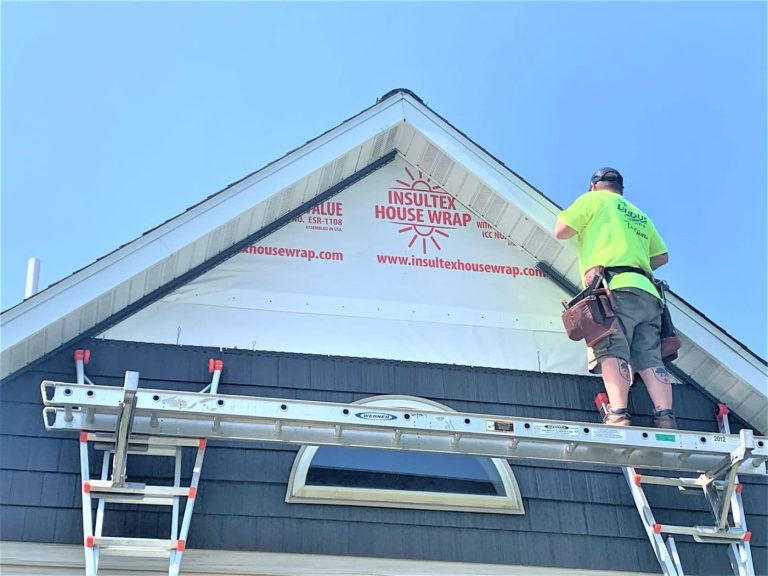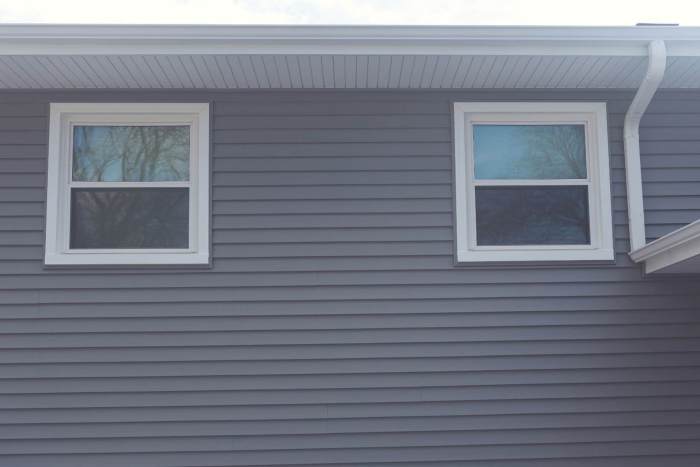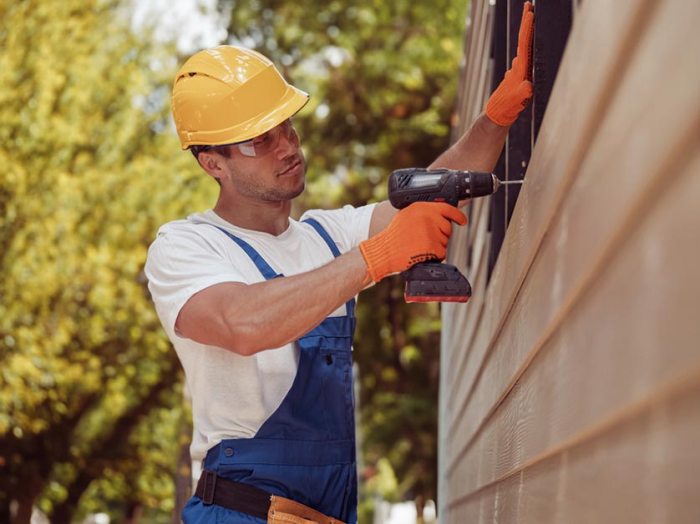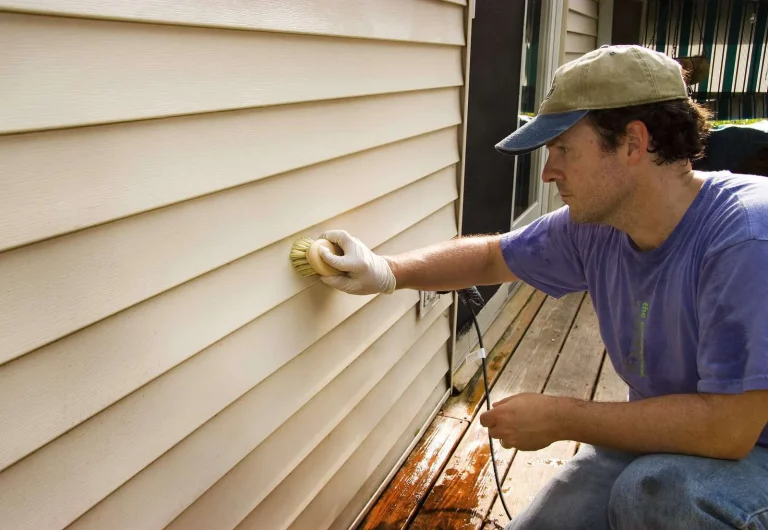Siding Companies Your Guide to Choosing the Right One
Siding companies play a crucial role in protecting your home’s exterior. From understanding the various siding materials available – like vinyl, wood, and fiber cement – to navigating the complexities of finding a reputable contractor, this guide provides a comprehensive overview of the siding industry. We’ll explore the pros and cons of each material, discuss crucial factors to consider when choosing a siding company, and delve into installation, maintenance, and cost considerations.
This guide will empower you to make informed decisions, ensuring your siding project is successful and your home’s exterior looks its best. We’ll cover everything from comparing companies to avoiding common pitfalls, providing you with the knowledge to confidently navigate the siding process.
Introduction to Siding Companies
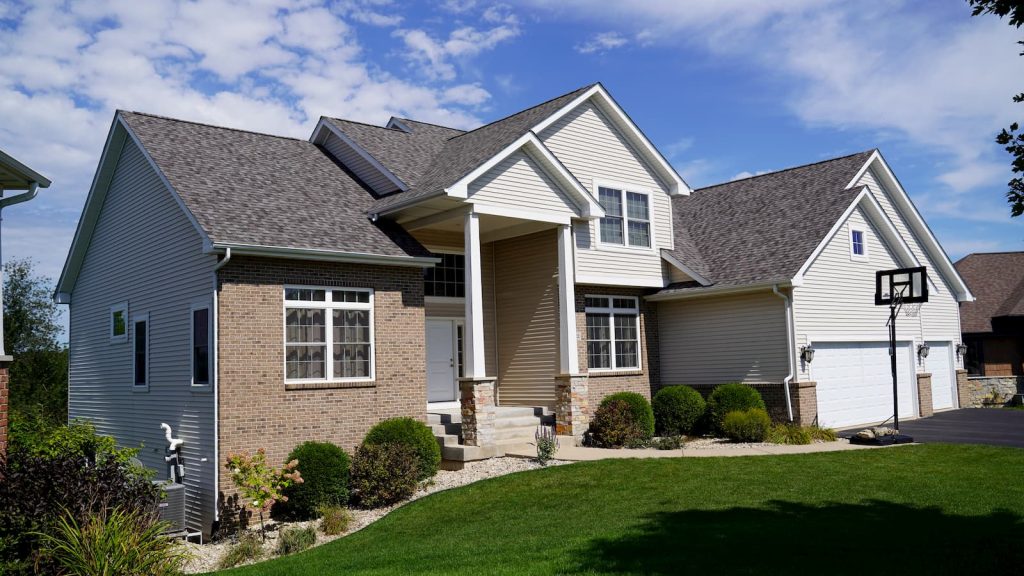
The siding industry is a significant part of the construction and home improvement sector, focusing on the exterior cladding of buildings. Siding companies play a crucial role in protecting homes and businesses from the elements, enhancing their aesthetics, and increasing their value. This industry encompasses a wide range of services, from installation and repair to complete replacement projects. Understanding the various siding materials and their associated properties is key to making informed decisions for homeowners and businesses.
Different materials offer varying advantages and disadvantages in terms of durability, cost, and aesthetic appeal. Homeowners must carefully weigh these factors when choosing the right siding for their needs. This overview provides an understanding of the siding industry, the different materials used, and the services offered by siding companies.
Siding Materials
Siding materials are diverse, each with unique characteristics that affect their performance and longevity. Common materials include vinyl, wood, and fiber cement. The selection process hinges on the specific requirements of the project, balancing factors like cost, maintenance, and desired aesthetic.
Types of Siding Materials
- Vinyl siding is a popular choice due to its affordability, low maintenance, and wide range of colors and styles. Its resistance to rot, insects, and warping makes it a resilient option. However, it might not offer the same aesthetic appeal as natural wood siding and can be prone to damage from extreme temperatures.
- Wood siding offers a classic, natural look. Its beauty comes with the need for regular maintenance to prevent rot, insect damage, and deterioration. Wood siding is often more expensive than vinyl and requires more upkeep.
- Fiber cement siding combines the best aspects of both vinyl and wood. It offers a natural appearance similar to wood but with the durability and low maintenance of vinyl. Fiber cement siding is generally more expensive than vinyl but is known for its longevity and resistance to rot and pests.
Services Offered by Siding Companies
Siding companies provide a range of services beyond simply installing new siding. Their expertise often extends to repairs, replacements, and even specialized installations, adapting to various property needs. The services offered can include:
- Installation: Professionals handle the installation process, ensuring proper measurements, preparation, and adherence to building codes.
- Repair: Companies can address damage to existing siding caused by weather events, impacts, or other factors, limiting further deterioration.
- Replacement: Replacing damaged or aging siding is crucial to maintaining the structural integrity and aesthetic appeal of a property. Companies can replace sections or complete entire projects.
Comparison of Siding Materials
| Material | Pros | Cons |
|---|---|---|
| Vinyl | Affordable, low maintenance, wide variety of colors, resists rot, insects, and warping, relatively easy to install. | It can be prone to damage from extreme temperatures, and may not offer the same aesthetic appeal as natural wood siding. |
| Wood | Classic, natural look, warm aesthetic, good insulation properties. | Requires regular maintenance to prevent rot, insect damage, and deterioration. Susceptible to moisture damage, more expensive than vinyl over time, may require painting or staining. |
| Fiber Cement | Natural appearance similar to wood, high durability, low maintenance, resistance to rot, pests, and extreme weather conditions, long lifespan. | Generally more expensive than vinyl, it may not offer the same range of colors as vinyl siding. |
Finding Siding Companies
Locating a trustworthy siding company is a crucial step in any home improvement project. Thorough research and careful evaluation can save you time, money, and potential headaches down the line. A reputable company will not only install high-quality siding but also handle the project professionally, ensuring a smooth and satisfying experience.
Finding Reputable Siding Companies
Numerous avenues exist for discovering siding companies. Online directories, local referrals, and even advertisements in local publications can be valuable starting points. These resources often provide contact information and initial assessments of companies. Beyond these initial leads, personal recommendations can be extremely helpful.
Evaluating Potential Companies, Siding Companies
Before making a decision, a thorough evaluation of potential siding companies is essential. Verify that the company holds the necessary licenses and insurance. A valid contractor’s license ensures the company is legally authorized to operate within the region. Adequate insurance coverage protects homeowners from unforeseen issues during the installation process, like accidents or property damage. In addition to licenses and insurance, carefully review online reviews and testimonials from past customers. Positive feedback from satisfied clients often indicates a reliable and professional company.
Checking References and Past Projects
A critical component of the evaluation process involves checking references and inspecting past projects. This step provides insight into the company’s work ethic, quality of materials, and adherence to project timelines. By contacting previous clients, you can gauge their satisfaction and identify potential issues or areas for improvement. Visiting completed projects allows you to assess the company’s craftsmanship firsthand, enabling you to make an informed decision.
Essential Questions for Potential Siding Companies
Careful questioning of potential siding companies is paramount to making an informed decision. The following table lists the key questions to address during your inquiries:
| Category | Questions |
|---|---|
| Licensing & Insurance | What is your company’s contractor license number? What is the scope of your liability insurance coverage? Can you provide proof of current workers’ compensation insurance? |
| Experience | How long has your company been in business? What types of siding installations have you completed in the past? Can you provide examples of similar projects to the one I’m considering? |
| Pricing | What is your pricing structure? Does your price include materials, labor, and permits? Are there any hidden fees or additional charges? Can you provide a detailed breakdown of the estimated project costs? |
Understanding Siding Costs
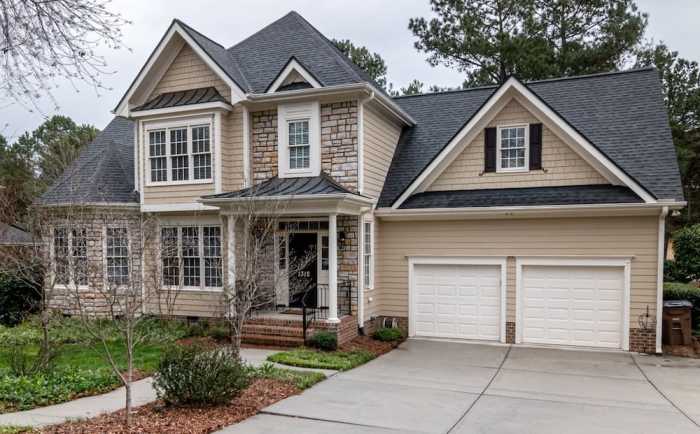
Source: aztecsiding.com
Siding projects, while enhancing curb appeal and home value, often come with a price tag that can vary significantly. Understanding the factors influencing these costs is crucial for homeowners to make informed decisions and budget effectively. This section details the key elements impacting siding project pricing, offering insights into typical pricing structures and cost-saving strategies.
Factors Influencing Siding Costs
Several key factors contribute to the overall cost of a siding project. Material type, labor costs, and project size all play a significant role. Different materials possess varying levels of durability and aesthetic appeal, influencing their price. Labor costs depend on factors such as the complexity of the installation, the size of the crew, and local labor rates. The size and scope of the project, including the square footage of the home requiring siding, directly correlate with the total project cost.
Pricing Structures for Siding Projects
Siding pricing structures typically involve a combination of material costs and labor charges. Material costs are usually calculated per square foot, factoring in the material’s cost and the amount needed for the project. Labor costs are often based on a per-hour or per-project rate. Some companies may offer package deals that bundle materials and labor at a fixed price, which can simplify the budgeting process. Project pricing structures can be highly variable depending on the company, local market conditions, and the project’s scope.
Estimated Costs for Various Siding Options
This table provides estimated costs for different siding materials, assuming a 100-square-foot project. These figures are approximations and may vary significantly based on factors such as material quality, labor costs, and location.
| Material | Square Footage | Estimated Cost |
|---|---|---|
| Vinyl | 100 sq ft | $1,500 – $2,500 |
| Wood | 100 sq ft | $2,000 – $3,500 |
| Fiber Cement | 100 sq ft | $2,500 – $4,000 |
Cost-Saving Strategies for Siding Projects
Several strategies can help homeowners reduce the cost of their siding project without compromising quality. One common approach is to negotiate with siding contractors. Thorough research and comparison shopping for materials and contractors can also yield significant savings. Considering less expensive materials, such as vinyl, for areas not directly visible can reduce overall costs. Planning the project carefully, ensuring all necessary materials and labor are accounted for in the initial budget, can also mitigate unexpected costs. Lastly, taking on a portion of the labor, such as prepping the home’s surface, could potentially decrease the overall labor cost.
Siding Installation and Maintenance
A well-maintained siding system is crucial for the longevity and aesthetic appeal of a home. Proper installation and consistent upkeep can significantly extend the lifespan of the siding, minimizing costly repairs and ensuring a beautiful exterior. This section will detail the process of installing siding, the techniques used for different types, and essential maintenance steps.
Siding Installation Process
The installation process for siding typically involves several key steps, beginning with careful planning and preparation. This meticulous approach ensures a secure and aesthetically pleasing result. Each step, from initial measurements to the final finish, plays a critical role in the overall success of the project.
- Site Preparation: This initial phase includes clearing the area, removing any existing siding, and ensuring proper drainage. This crucial step prevents future problems and ensures a solid foundation for the new siding.
- Framing and Structure: If necessary, new framing or structural adjustments may be needed to accommodate the new siding. This stage ensures the structural integrity of the house and the proper fit of the siding.
- Installation of Sheathing and/or Flashing: Sheathing provides a surface for the siding to adhere to, while flashing prevents water from seeping into the wall. These components are essential for long-term performance.
- Siding Application: Depending on the type of siding, this step may involve nailing, screwing, or adhering panels to the prepared surface. The specific techniques will vary based on the siding material.
- Finishing Touches: This stage involves caulking, painting, or sealing to complete the installation and enhance the aesthetic appeal. This final step ensures a clean and professional finish.
Installation Techniques for Different Siding Types
Various installation techniques are employed depending on the siding material. Understanding these techniques is essential for a successful installation.
- Vinyl Siding: Vinyl siding is typically installed using a specialized nailing or clip system, with proper spacing and ventilation considered. Adhesive systems are also common for specific vinyl types.
- Wood Siding: Wood siding often involves nailing or screwing into the framing, with attention to proper spacing and the use of appropriate fasteners. Wood siding often requires additional weatherproofing measures.
- Fiber Cement Siding: Fiber cement siding usually involves a more robust installation process. Specialized fasteners and techniques are required to secure the siding panels effectively, ensuring a tight fit.
- Metal Siding: Metal siding installation often involves specialized tools and techniques to secure the panels tightly. Correct installation is crucial to prevent leaks and maintain structural integrity.
Essential Siding Maintenance Steps
Regular maintenance is key to preventing damage and extending the lifespan of siding. Proactive maintenance is often more cost-effective than reactive repairs.
- Cleaning: Regular cleaning prevents the accumulation of dirt and debris, which can lead to discoloration and damage. Different siding types require different cleaning methods.
- Inspections: Regular visual inspections can identify potential problems early on, such as loose panels, damaged areas, or signs of water damage. Prompt attention to these issues prevents costly repairs later.
- Repairs: Addressing any damage promptly is critical to prevent further deterioration. Early repairs can save significant expenses in the long run.
Step-by-Step Siding Cleaning Guide
The specific cleaning method depends on the type of siding material. A tailored approach is essential for optimal results.
| Siding Type | Cleaning Method |
|---|---|
| Vinyl | Use a mild detergent solution and a soft-bristled brush or sponge. Rinse thoroughly with water. |
| Wood | Use a soft brush or sponge with a mild soap solution. Rinse thoroughly and allow to dry completely. |
| Fiber Cement | Use a stiff brush or power washer with a low-pressure setting. Rinse thoroughly. |
| Metal | Use a stiff brush or power washer with a low-pressure setting. Rinse thoroughly. |
Importance of Regular Maintenance
Regular maintenance significantly reduces the risk of costly repairs and extends the life of siding. Proactive maintenance often minimizes the impact of harsh weather conditions and protects the structural integrity of the home.
Choosing the Right Siding Company
Selecting the ideal siding company is crucial for a successful and long-lasting project. Careful consideration of factors like customer reviews, warranty specifics, and reputation is vital for achieving optimal results. This process ensures you’re partnering with a company capable of delivering high-quality work and addressing any potential issues efficiently.
Comparing Siding Companies Based on Reviews and Testimonials
Customer reviews and testimonials provide valuable insights into a company’s performance and reliability. Scrutinizing these sources allows you to gauge the company’s communication style, work ethic, and responsiveness to customer needs. Look for consistency in feedback, paying attention to both positive and negative aspects. A company with predominantly positive feedback, coupled with a proactive approach to addressing concerns, is generally a better choice.
Comparing Warranties and Guarantees
Evaluating warranties and guarantees is paramount when selecting a siding company. These documents Artikel the company’s commitment to the quality of their work and materials. Understanding the specifics of different warranties is key.
| Warranty Type | Description | Implications |
|---|---|---|
| Labor Warranty | Covers potential issues with the installation process. | Ensures the work is performed correctly, protecting against future problems stemming from faulty workmanship. |
| Material Warranty | Guarantees the quality and durability of the siding materials used. | Protects against issues arising from material defects or deterioration. |
| Full System Warranty | Combines both labor and material warranties, offering comprehensive protection. | Provides the most comprehensive coverage, ensuring protection against defects in both installation and materials. |
Thorough examination of the warranty details, including the duration, coverage, and terms and conditions, is essential.
Importance of Reputation and Customer Service
A strong reputation and exceptional customer service are key indicators of a reliable siding company. Companies with positive reviews and a proven track record of handling customer issues effectively often provide a more satisfying and less stressful experience. Companies that actively solicit feedback and promptly address concerns demonstrate a commitment to customer satisfaction. This proactive approach reduces the likelihood of encountering significant problems during or after the installation process.
Examples of Different Warranties and Their Implications
A 10-year labor warranty signifies a company’s confidence in its installation techniques. A 20-year material warranty indicates the quality of the siding materials used. A full system warranty of 25 years signifies the company’s complete confidence in both the materials and the installation process. These warranties reflect the company’s commitment and its belief in the longevity and durability of its work.
Avoiding Common Siding Problems
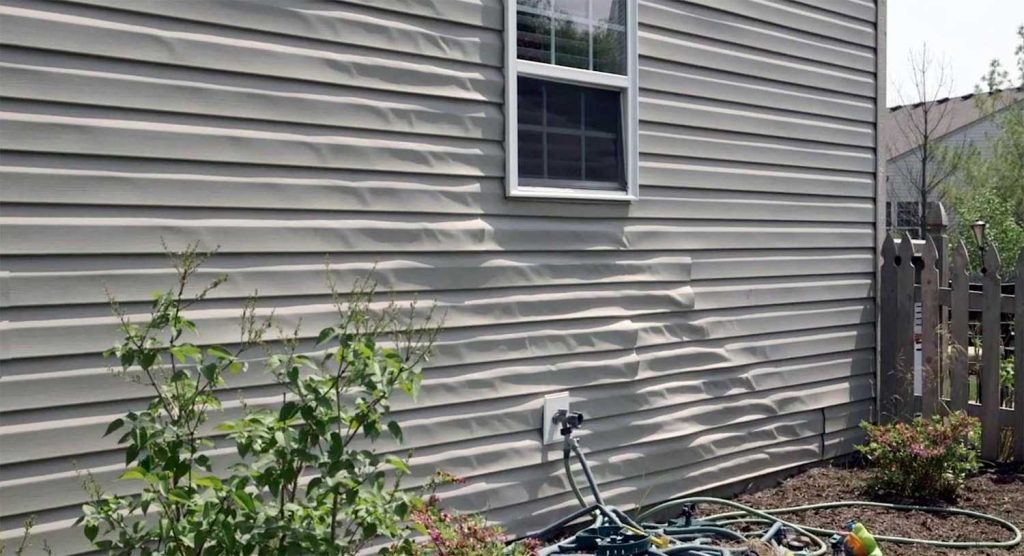
Choosing the right siding company is crucial for a successful project. However, even with careful selection, potential issues can arise. Understanding these common pitfalls can help homeowners avoid costly mistakes and ensure a long-lasting, attractive exterior.
Careful consideration and proactive measures are essential to mitigate these problems. By understanding potential issues and implementing preventative strategies, homeowners can safeguard their investment and ensure a smooth siding installation process.
Common Mistakes in Choosing a Siding Company
Selecting a siding company based solely on price can lead to subpar workmanship and materials. Thorough research, including checking for certifications and licenses and verifying past performance, is vital. Failing to consider factors like reputation, experience, and customer reviews can expose homeowners to potential problems later on.
Importance of a Thorough Contract Review
A detailed contract review is critical before signing. It should critique the scope of work, materials to be used, labor costs, payment schedule, warranty details, and the timeline for completion. Unclear or ambiguous clauses can lead to disputes and unexpected costs. Understanding the specifics of the contract will protect homeowners from hidden fees or unfulfilled promises.
Potential Issues with Poor Workmanship or Materials
Poor workmanship can manifest in uneven installations, improperly sealed seams, or damaged siding. Substandard materials may lead to premature deterioration, requiring costly replacements sooner than expected. Inspecting the work regularly during the installation process and seeking professional opinions when needed are vital steps to ensure quality.
Resolving Disputes with Siding Companies
Open communication and a proactive approach are crucial when dealing with siding company disputes. Documenting any concerns, issues, or discrepancies in writing, along with photographic evidence if applicable, is essential. Mediation or arbitration may be necessary in some cases, and consulting with a legal professional can provide guidance on appropriate actions. Maintaining records of all communication and interactions with the company is important.
Legal Recourse for Unsatisfied Customers
Homeowners have legal recourse for unsatisfactory siding installations. Breach of contract, faulty workmanship, or substandard materials can be grounds for legal action. Consulting with a consumer protection attorney is advised to explore options and understand the applicable laws in their jurisdiction. Knowledge of legal options is essential for pursuing appropriate action.
Closure: Siding Companies
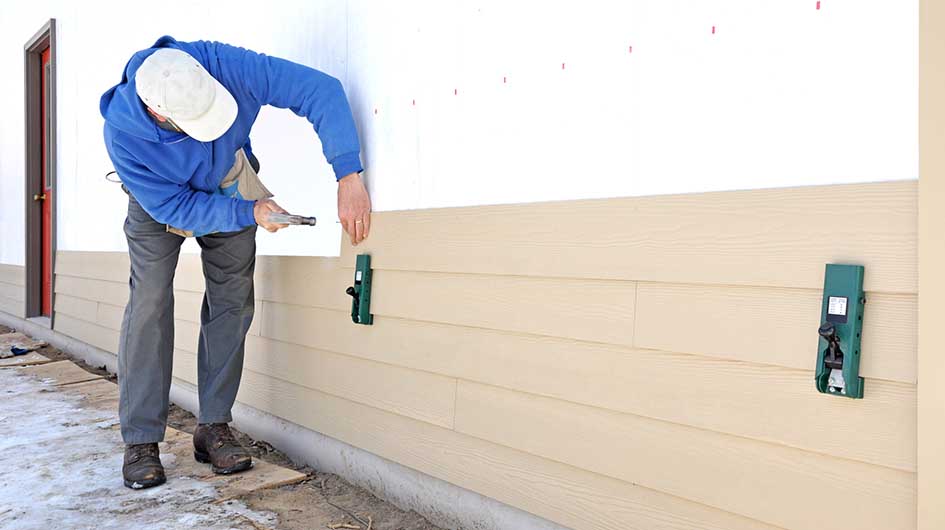
In conclusion, choosing the right siding company involves careful consideration of material types, contractor qualifications, and project costs. By understanding the different siding materials, evaluating potential companies, and recognizing potential problems, you can make informed decisions that will protect your investment and enhance your home’s curb appeal. Remember to thoroughly research, compare quotes, and prioritize reputable companies with strong customer reviews and warranties.
